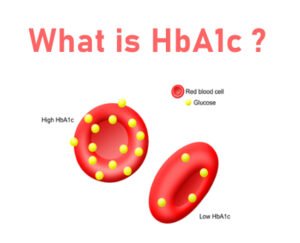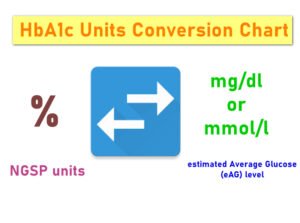MCV is an abbreviation for Mean Corpuscular Volume. MCV blood test is an integral part of routine hematological tests known as Complete Blood Count, Complete Blood Cell Count (CBC), or Full Blood Count (FBC).
MCV measures the average size and volume of red blood cells floating in the blood.
Red Blood Cells (RBCs) are an important part of blood and have hemoglobin. Hemoglobin carries oxygen to the body tissues. We take oxygen from room air through the process of inspiration.
Oxygen passes through the nose or mouth cavities into our lungs. Lungs have a network of blood vessels. This is the point where RBCs take oxygen and transport it to all tissues of the body. Oxygen is necessary for the normal functioning of cells.
What is an MCV blood test?
MCV is a measure of RBC volume averaged over millions of RBCs. The hematological analyzers in a laboratory automatically measure MCV. It is measured in femtoliters (fL).
MCV is an average volume of individual erythrocytes derived from the RBC histogram. If the size of red blood cells is smaller than the normal range, it is called microcytosis.
Moreover, if the size of red blood cells is larger than the normal range, it is called macrocytosis.
Assessment of red blood cell (RBC) size
The red blood cell’s (RBC) size is measured using an automated hematological instrument. This automated hematological instrument accurately measures MCV and RDW (red cell distribution width).
Red blood cells pass one-by-one through a small aperture in an automated instrument. This automated instrument estimates the size of red blood cells in three dimensions using refraction, light scattering, or diffraction.
In more than 95% of cases, we can accurately measure the value of MCV. In the remaining 5% of cases, this value can vary from the average range in healthy individuals. The average range of MCV depends on sex, age, and race.
Procedure
- The automated analyzer multiplies the size of the RBCs in each channel by the number of RBCs in that channel.
- It then adds the products of each channel between 36 femtoliters and 360 femtoliters.
- Then the sum is divided by the total number of RBCs between 36 femtoliters and 360 femtoliters.
- Ultimately, it is Multiplied by a calibration constant, and MCV is expressed in femtoliters.
How to calculate
One way to calculate MCV is through the measured RBC count and the hematocrit. The equation is
MCV (fL) = (10 x hematocrit) / RBC count
For example: If the hematocrit is 40% and the RBC count is 5 x 1000000/microL will be
(10 x 40) / 5 = 80
Purpose of MCV blood test
The purpose of an MCV blood test is to evaluate different medical conditions. MCV is clinically significant in differentiating between types of anemia.
Your healthcare provider may compare the results of the MCV blood test with other CBC components like MCH, MCHC, RDW, etc. Depending on the MCV blood test values, anemia is of three types.
- Microcytic anemia: This type of anemia has an MCV blood test value less than the lower limit of the normal range, i.e., < 80.
- Normocytic anemia: This type of anemia has an MCV blood test value within the normal range, i.e., 80-100.
- Macrocytic anemia: This type of anemia has an MCV blood test value greater than the upper limit of the normal range, i.e., >100.
Normal range of MCV blood test
The average range for MCV in adults is 82.5 to 98 femtoliters. However, it depends on age, sex, and other factors also.
| Age | Lower Limit (fL) | Upper Limit (fL) |
|---|---|---|
| 6 months to <2 years | 73 | 85 |
| 2 to 6 years | 75 | 86 |
| 12 to <18 years • Male • Female | • 78 • 80 | • 90 • 96 |
| Adults | 80 | 96 |
What to expect
Before the MCV blood test
- Healthcare providers may advise MCV blood tests as a part of your routine testing or to evaluate some medical conditions.
- It is not necessary to limit your activities before the test.
- Do not do food restrictions before the test.
During the MCV blood test
- The blood sample will be drawn from a vein.
- The phlebotomist will follow all the SOPs to ensure hygienic conditions.
- The phlebotomist will clean the area of your body, place a tourniquet, and insert a needle into the vein.
- The sample will be collected in a tube and sent to the laboratory for test.
After the MCV blood test
- After sample collection, you can leave for home.
- Bleeding will stop on its own if you do not have any underlying blood disorder related to hemostasis.
- Sometimes, it may cause hematoma formation at the site of the needle prick.
Causes of low MCV blood test
A value of MCV <80 below the normal range’s lower limit is called a low MCV blood test because of various causes.
Common causes of microcytosis
The common causes of microcytosis or low MCV blood tests are
- Iron deficiency: It may be due to nutrient deficiency, decreased iron absorption, or in individuals with some chronic disease that cause blood loss i.e heavy menstruation in females or individuals with a history of gastrointestinal bleeding.
- Anemia of chronic disease: Any chronic disorder may be a culprit in this condition.
- Thalassemia: It is an inherited blood disorder due to defective hemoglobin chains. Types are alpha-thalassemia and beta-thalassemia.
Rare causes of microcytosis
The rare causes of microcytosis or low MCV blood tests are
- Sideroblastic anemia
- Hereditary hypotransferrinemia
- Iron-refractory iron deficiency anemia
- Lead poisoning
- Copper deficiency
- Zinc deficiency
- Alcohol and certain drugs
- Drug-induced anemia
Causes of High MCV blood test
A value of MCV >100 above the normal range’s upper limit is called a high MCV blood test, and it is because of numerous causes.
Common causes of macrocytosis
The common causes of macrocytosis or high MCV blood tests are
- Vitamin B12 (Cobalamin)
- Folate (Folic acid) deficiency
Rare causes of macrocytosis
The rare causes of macrocytosis or high MCV blood tests are
- Drugs (Hydroxyurea, 5-FU, MTX (Methotrexate), HIV meds)
- Liver disease
- Smoking
- Alcoholism
- Hypothyroidism
- Myelodysplastic Syndrome
- Hemolysis
- Hyperglycemia (Increased blood sugar level)
Frequently asked questions
Q1. What does low MCV mean in a blood test?
If the value of MCV in your blood reports is below the lower limit of the normal range i.e <80 fL, it is called microcytic anemia. It means decreased hemoglobin content within the red blood cells (RBCs). Moreover, the size of RBCs is smaller than the normal RBCs.
Q2. What does high MCV mean in a blood test?
If the value of MCV in your blood reports is greater than the upper limit of the normal range, i.e.,>100 fL, it is called macrocytic anemia. It means increased hemoglobin content within the red blood cells (RBCs). Moreover, the size of RBCs is greater than the normal RBCs.
Q3. Why do I need an MCV blood test?
MCV blood test is essential to diagnose different types of anemia. It is measured through CBC and further management depends on its values. Your healthcare provider can advise you to take an MCV blood test whenever you feel the following symptoms.
• Shortness of breath
• Fatigue or generalized body pains
• Headache
• Dizziness
• Palpitations
Q4. What cancers cause high MCV blood tests?
MCV may be an excellent prognostic marker for a few tumors. An elevated MCV blood test can be linked to severe cancers. There could be n association between MCV and the prognosis of esophageal, colorectal, and liver cancers.
Q5. What is the most common cause of high MCV?
The most common cause of high MCV in a blood test is vitamin B12 and folic acid deficiency.
Reference
- Kwon H, Park B. Borderline-High Mean Corpuscular Volume Levels Are Associated with Arterial Stiffness among the Apparently Healthy Korean Individuals. Korean J Fam Med. 2020 Nov;41(6):387-391. doi: 10.4082/kjfm.19.0061. Epub 2020 Jan 20. PMID: 31955550; PMCID: PMC7700835.
- Nagai H, Yuasa N, Takeuchi E, Miyake H, Yoshioka Y, Miyata K. The mean corpuscular volume as a prognostic factor for colorectal cancer. Surg Today 2018;48:186–194.
- Yoon HJ, Kim K, Nam YS, Yun JM, Park M. Mean corpuscular volume levels and all-cause and liver cancer mortality. Clin Chem Lab Med 2016;54:1247–1257.
- Zheng YZ, Dai SQ, Li W, et al. Prognostic value of preoperative mean corpuscular volume in esophageal squamous cell carcinoma. World J Gastroenterol 2013;19:2811–2817.






